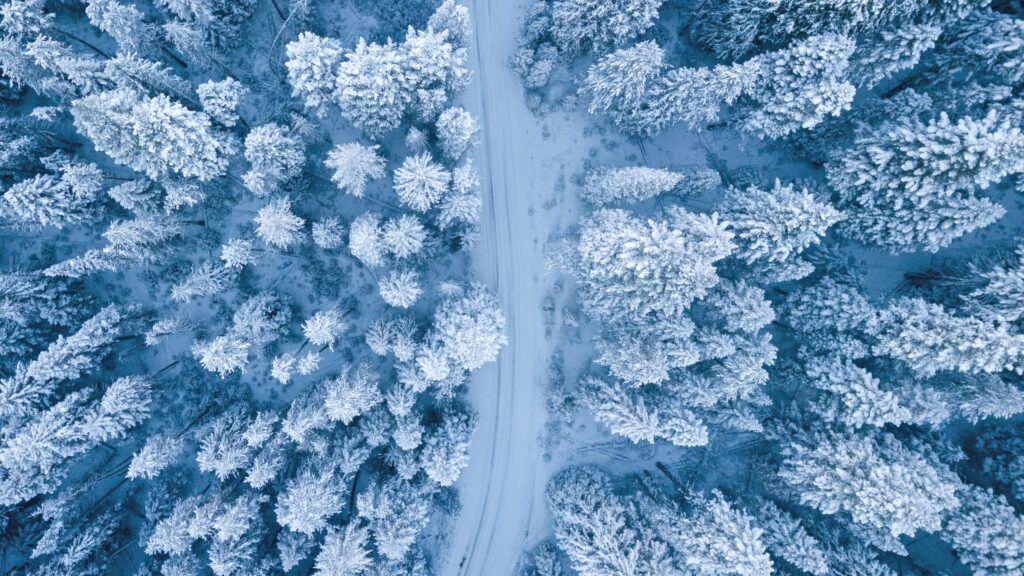
If this is your first winter in the Inland Northwest, here is a quick rundown of a few things you can do to prepare!
Snow Ready Tires
There are 2 common options –
- All season tires that have been siped, and
- Walnut shell or Studded tires.
The type you go with largely depends on the specific roads that you drive. Studs are good for packed snow and thick ice of country roads, but the siped tires are great for the thinner ice and low slush in town. Talk to your local tire store about your specific location and learn about your options. They will get your tires fixed up right!
Clearing The Driveway
In general, the longer the driveway or country road you need to plow – the better the equipment you will want to have.
For most places in town, a snow shovel is adequate.
For longer driveways, you might consider a snow blower – or maybe find a neighbor with one whom you might be able to pay to clear you out if the snow is heavy.
Long country driveways generally use a plow blade attachment on a truck or 4-wheeler. Snow blower attachments are less common, but also a useful upgraded option if you’re way out in the boonies.
Prepare The House
Water Pipes: Last winter, the temps dropped to -19 degrees, and there were a few burst pipes out there. If you have an older home or a manufactured home, you will want to let a faucet drip on those ultra cold nights to keep the pipes from freezing. Cover all of your outdoor hose bibs with insulated covers, and detach your hoses.
Roof: Take care of your roof. Some winters, the snow gets very heavy. A year ago, we had around 2 feet of snow – and before it could melt, it started to rain. The snow absorbed the rain like a sponge, and the weight was too much for many roofs. You can scrape the roof off with a roof rake – or pay a handy person to come do it for you.
Fuel: As we get closer to winter, the prices for fuel tend to go up – so make sure to fill your propane, oil, or wood stores early in the fall.
Prepare Outside
Snow Removal: There are a few things you can do around the yard as well. Local services need your assistance to make sure your mailbox, and address numbers are clear of snow. If you have a fire hydrant near your yard, please shovel it out. Also, learn what time the plow comes through your neighborhood, and move your car off the street so the plows can get as close to the curb as possible. And just a side note here – the plows will put a berm in front of your driveway. Inevitably right after you finished shoveling!
Animals: If you have pets, or chickens, or livestock, have a plan for keeping the water thawed, and a heat source (something that is not a fire hazard) to keep the animals safe if the temps get really cold.
Garden: If you have any garden plants that aren’t super cold hardy – you’ll want to make sure they are insulated.
Tip for Christmas Lights: If you wait until December to hang your lights, there is a 50% chance that your roof will be too frozen and icy. It can be helpful to at least hang the clips while the weather is still good.
Winter Clothing
There are 2 articles of clothing that are exceptionally helpful, in my experience.
1st is a good winter coat: ski jacket, hunting coat, or other well insulated style, but something good. The basic economy coats you find at the grocery store usually look good, but aren’t fully water resistant, and poorly insulated. A quality coat will last you many winters, and it’s worth it to be warm and dry.
2nd is a good pair of waterproof boots. Something you can wear between your car and the office or grocery store. On snowy days, snow builds up faster than the plows can clear, and when the weather warms, there are big icy puddles in every parking lot. Good boots will keep your feet dry and comfortable.
Other Options: If you are going to spend more time skiing or playing in the snow, add some good snow pants, and waterproof gloves. Wool socks, long underwear (avoid cotton), hats and scarves/balaclava will also help you to have fun in the snow.
Remember – The better your snow clothes, the more fun you are likely to have in the snow!
Tips For Surviving Winter
Finally, a couple of things to remember: Winter in the Inland Northwest may be longer than you imagine. There are winters where the snow starts to stick in November, and doesn’t fully melt until the end of March – That’s 5 months. Some winters, it’s 5 months. Some winters, it’s closer to 3.
So perhaps the most important message is – Enjoy the winter!
Locals LOVE the winter. Whether they have outdoor hobbies like skiing, snowmobiling, or ice fishing, or indoor hobbies, like working on those scrapbooks or reading a new book beside the fireplace. It is my hope that if you are new to winter, that you are able to take it in stride and find the perfect activities that will make winter a wonderful time for you too!


